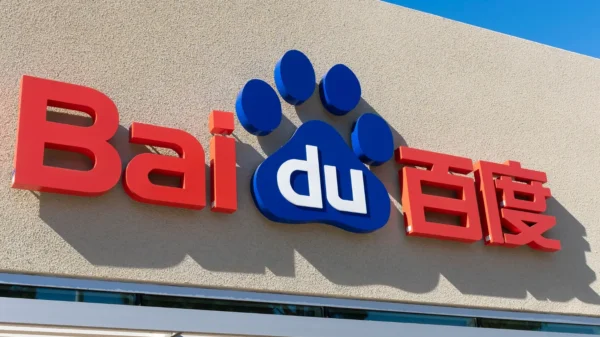Industry heavyweights like OpenAI are feeling the heat from the lightning-fast advancements in artificial intelligence (AI). The company is facing a plethora of opportunities and threats as it keeps pushing the limits of AI research. Balancing AI innovation, scalability, and competition within the broader AI ecosystem is a complex topic, and it will be explored in the following conversation.
The Long-Term Plan for OpenAI’s AI Progress
OpenAI has had remarkable growth. The company has further established itself as a frontrunner in the artificial intelligence space with the release of its GPT models and ongoing development of multimodal AI systems. However, keeping up with internal and external demands is becoming more difficult as technology advances at a rapid pace.
Improving the efficiency and accessibility of OpenAI’s models has been a primary focus of the company’s strategy. Though it required meticulous preparation and extensive funding, this strategy has enabled OpenAI’s evolution from a research-centric organization into a commercial behemoth. It takes a lot of money to scale AI capabilities, satisfy customers, and beat rivals like Microsoft and Google.
Successfully Handling Market Demand and Allocation of Resources
The demand for OpenAI’s services is on the rise due to the rapid advancements in AI technology. The success of other basic models, such as GPT-4, has further intensified this. The pursuit of innovative, state-of-the-art products comes with a natural tension, which the corporation must overcome. A major obstacle is the distribution of resources, including human capital and physical plant.
With the development of more advanced AI models, OpenAI’s demand for more computing capacity becomes increasingly apparent. Boosting AI training processes, increasing server capabilities, and boosting cloud infrastructure are all part of this. The increasing number of competitors vying for a piece of the growing artificial intelligence market makes it all the more difficult to meet these needs without sacrificing operational excellence.
Challenges Faced by AI Ecosystem Rivals
With multiple tech behemoths competing for control of AI research and development, the broader AI ecosystem is characterized by cutthroat rivalry. In an effort to displace OpenAI, tech giants like Google, Microsoft, Amazon, and Meta are pouring resources into artificial intelligence research and development. In order to further advance AI, each corporation is utilizing its distinct capabilities, such as cloud computing services and specialist research teams.
Maintaining a leading position necessitates an ongoing cycle of invention and adaptation for OpenAI. Building general-purpose AI systems, such as ChatGPT and Codex, demonstrates the company’s goal of making solutions that both consumers and businesses can use. Nevertheless, substantial resources, skilled labor, and close collaboration are essential for the completion of such lofty endeavors.
Keeping Talent Alive in a Cutthroat Industry
Attracting and maintaining top-tier talent is a major problem for OpenAI. Experts in artificial intelligence are in high demand, with businesses competing for the services of qualified researchers, data scientists, and engineers. Fostering an environment of creativity and growth has been a challenge for OpenAI as it navigates this competitive landscape.
A compelling opportunity for professional advancement, involvement in groundbreaking research, and high-impact initiatives is what OpenAI offers to stay competitive. However, it also has to make sure that its internal values are in line with its larger goal of developing AI ethically and responsibly. A healthy work-life balance is vital for long-term viability, especially with the rapid pace of AI advancement. Employees may feel enormous pressure to keep up.
Moral Issues and AI’s Social Effects
Ethical concerns have dominated conversations over AI’s trajectory as it becomes increasingly pervasive in daily life. By stressing the importance of openness, equity, and safety in its models, OpenAI has strived to make ethical AI development a top priority. In light of the growing scrutiny of AI technology by governments and regulatory agencies throughout the globe, the firm’s declared dedication to responsible AI deployment is both a strategic decision and an absolute requirement.
One way OpenAI is helping to shape AI’s future is by tackling issues like data privacy, the potential social effects of automation in the long run, and bias in AI models. One of OpenAI’s primary goals is to make sure that AI technologies help people as much as possible while limiting their negative effects.
Growing AI Models and Systems: Difficulties
Technical and logistical hurdles arise when AI models are continuously scaled. In order to train and deploy their more complicated models, OpenAI needs a lot of computer power. Important parts of this procedure include setting up a cloud infrastructure, managing data, and optimizing models.
Modern artificial intelligence model training also requires extremely efficient data storage and processing due to the massive amounts of data involved. For its AI projects to grow, OpenAI has teamed up with industry-leading cloud providers like Microsoft Azure. However, there are strategic costs and benefits to these partnerships; for example, the company must manage its reliance on third-party platforms while maintaining its independence in AI R&D.
The Future of OpenAI: Uninterrupted Innovation
Plans call on OpenAI to maintain its current rate of innovation. Improving the AI models’ adaptability and efficiency is expected to continue to be a top emphasis for the company. The leadership of OpenAI has shown a strong desire to advance AI in both its technological and ethical aspects, making sure that its technology meets society’s expectations and demands.
Key components of OpenAI’s future strategy are anticipated to be investments in public involvement, collaborative efforts, and research on AI safety. In order to define the future of AI in a way that optimizes advantages while addressing significant dangers, the business is interacting with a diverse range of stakeholders, including governments, industries, and the public.
Summary: How OpenAI Is Changing the Face of Artificial Intelligence
Managing expansion, encouraging innovation, and navigating an increasingly competitive landscape will determine OpenAI’s future success as one of the most significant businesses in the AI sector. To pave the way for future AI innovations, OpenAI is juggling the needs of state-of-the-art research with the logistical difficulties of expanding AI infrastructure.












































